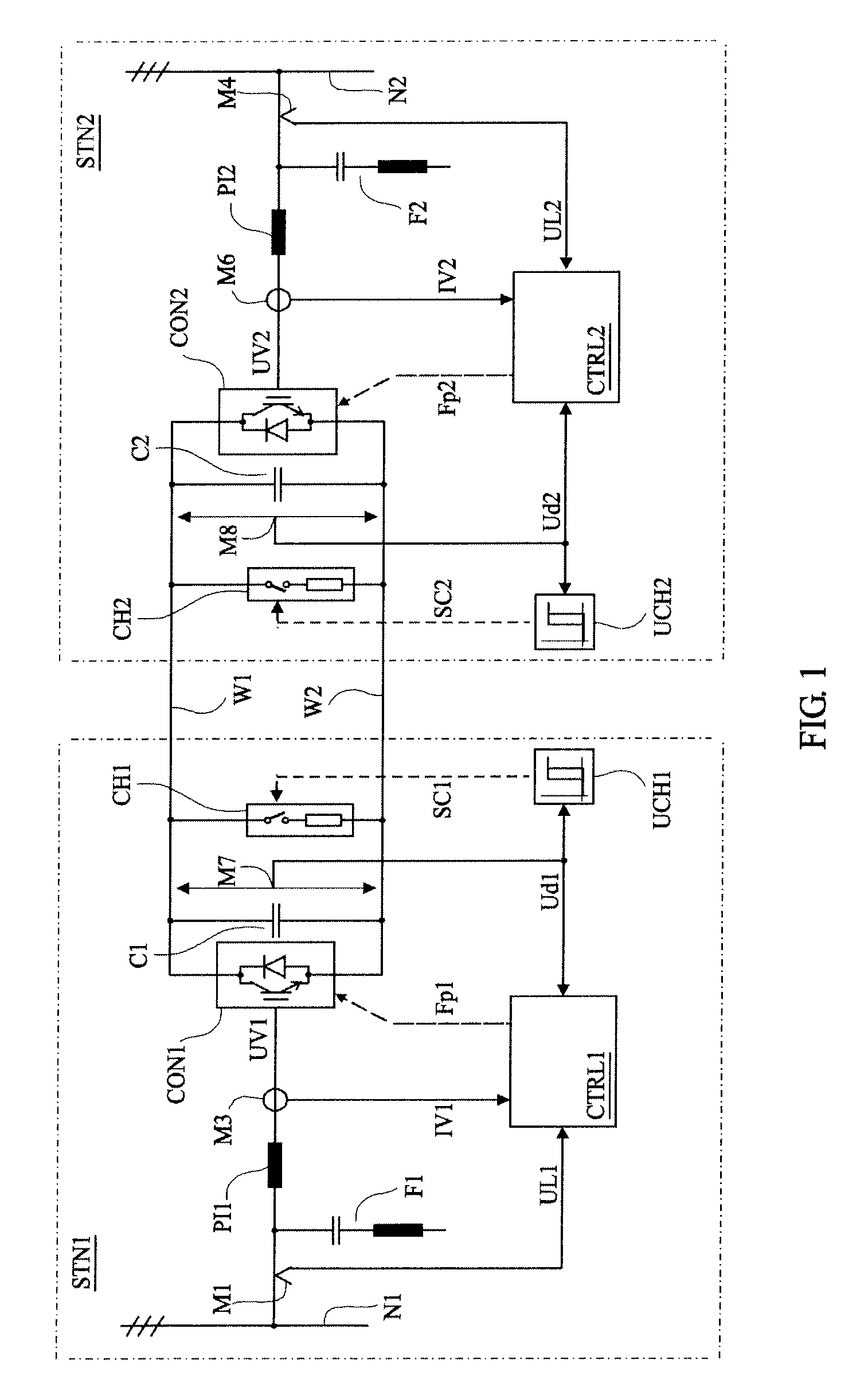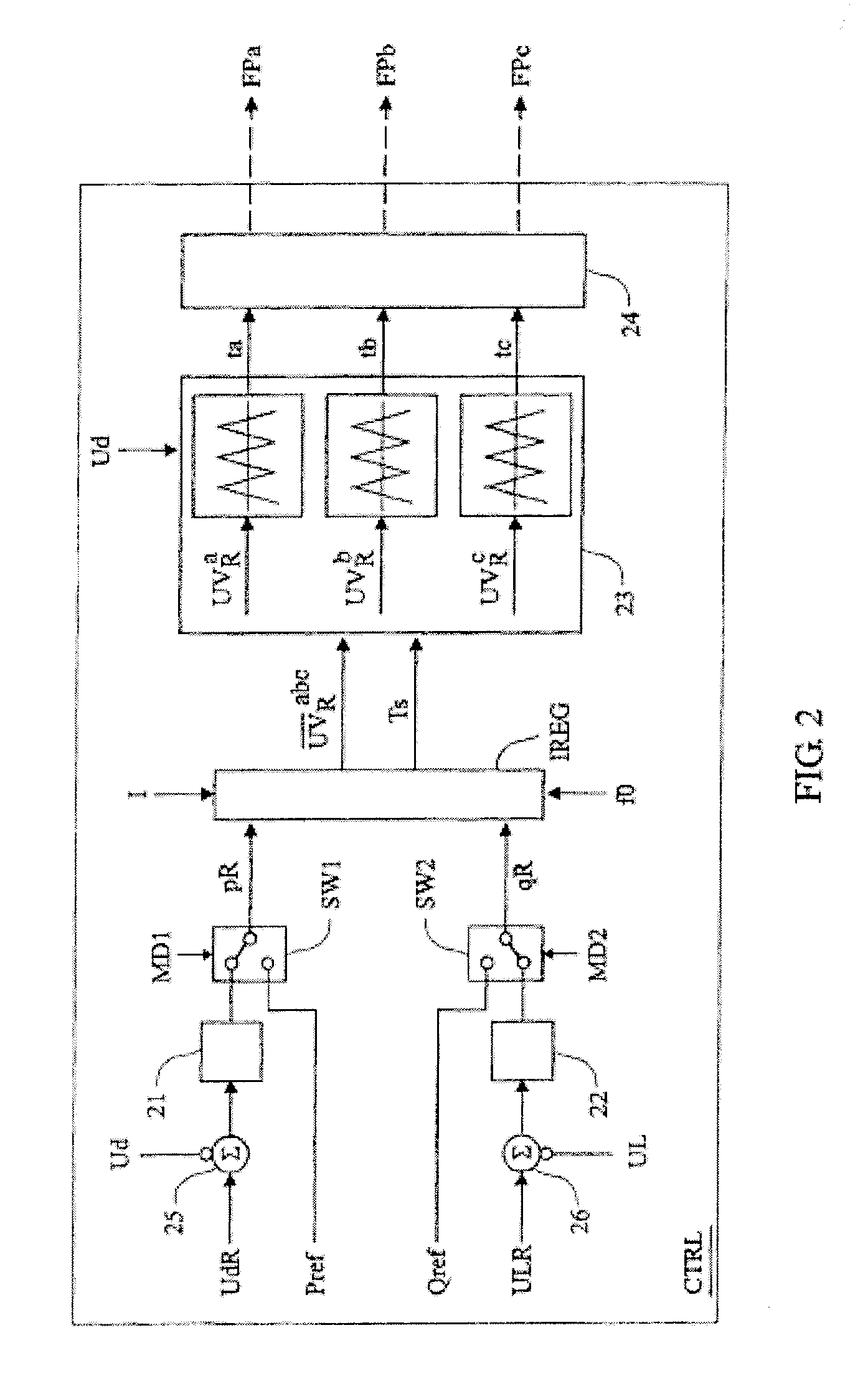HVDC system and method to control a voltage source converter in a HVDC system
a voltage source converter and hvdc technology, applied in power conversion systems, electric power transfer ac networks, circuit arrangements, etc., can solve problems such as difficult power restoration after a wide-area power outage in an ac network or ac grid, uneconomic to provide such a large standby capacity at each station, and difficult process of restoring power after an outag
- Summary
- Abstract
- Description
- Claims
- Application Information
AI Technical Summary
Benefits of technology
Problems solved by technology
Method used
Image
Examples
Embodiment Construction
[0039]The block diagrams to be described in the following can be seen both as signal flow diagrams and block diagrams of control equipment. The functions to be performed by the blocks shown in the block diagrams may in applicable parts be implemented by means of analogue and / or digital technique in hard-wired circuits, but preferably as programs in a microprocessor. It shall be understood that although the shown blocks are mentioned as members, filters, devices etc. they are, in particular where their functions are implemented as software for a microprocessor, to be interpreted as means for accomplishing the desired function. Thus, as the case may be, the expression “signal” can also be interpreted as a value generated by a computer program and appearing only as such. Only functional descriptions of the blocks are given below as these functions can be implemented in manners known per se by persons skilled in the art.
[0040]Variables appearing in the control equipment shown in the fig...
PUM
 Login to View More
Login to View More Abstract
Description
Claims
Application Information
 Login to View More
Login to View More - R&D
- Intellectual Property
- Life Sciences
- Materials
- Tech Scout
- Unparalleled Data Quality
- Higher Quality Content
- 60% Fewer Hallucinations
Browse by: Latest US Patents, China's latest patents, Technical Efficacy Thesaurus, Application Domain, Technology Topic, Popular Technical Reports.
© 2025 PatSnap. All rights reserved.Legal|Privacy policy|Modern Slavery Act Transparency Statement|Sitemap|About US| Contact US: help@patsnap.com



